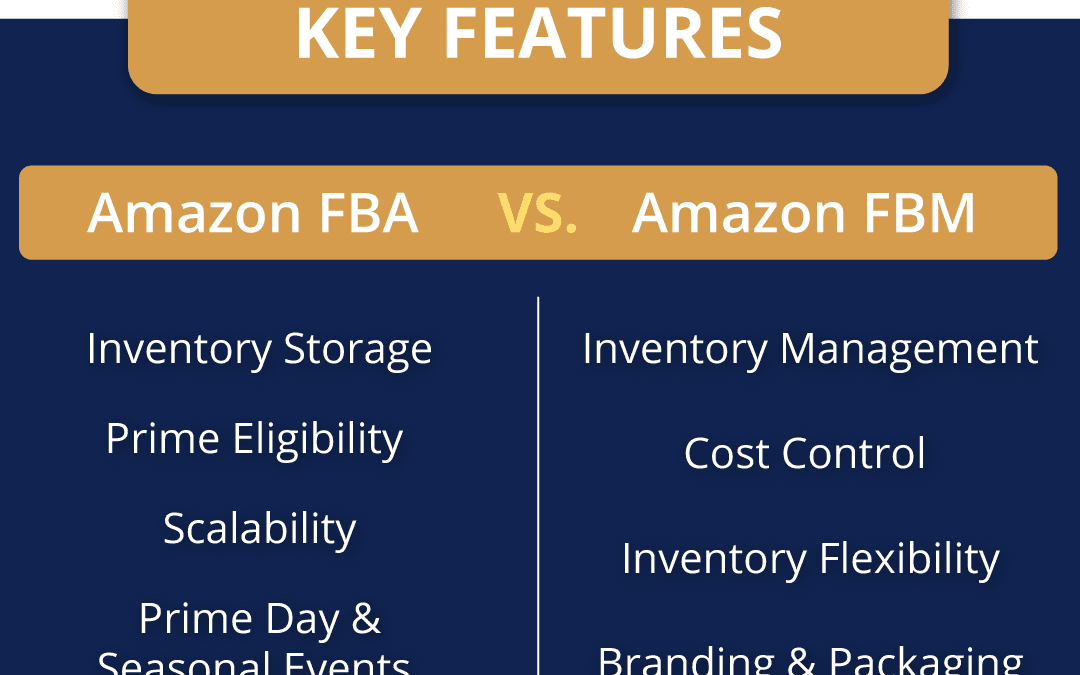Understanding Amazon FBA:
Fulfillment by Amazon (FBA) is a service offered by Amazon that allows sellers to store their products in Amazon’s fulfillment centers. Here’s how it works:
- Inventory Storage: With FBA, sellers send their products to Amazon’s warehouses, where they are stored until they are sold.
- Order Fulfillment: When a customer places an order, Amazon picks, packs, and ships the product on behalf of the seller.
- Customer Service: Amazon handles customer inquiries, returns, and refunds, providing end-to-end support for the fulfillment process.
Advantages of Amazon FBA:
- Prime Eligibility: FBA products are eligible for Amazon Prime, which offers fast and free shipping to millions of Amazon Prime members, enhancing product visibility and sales potential.
- Scalability: FBA allows sellers to scale their businesses without worrying about logistics and fulfillment, as Amazon manages inventory and shipping logistics.
- Prime Day and Seasonal Events: FBA sellers benefit from Amazon’s promotional events like Prime Day, as their products are more likely to be featured and promoted to a broader audience.
- Customer Trust: Amazon’s renowned customer service and hassle-free returns policy instill trust in buyers, leading to higher conversion rates and repeat purchases.
Challenges of Amazon FBA:
- Fees: FBA involves various fees, including storage fees, fulfillment fees, and referral fees, which can eat into profit margins, particularly for low-priced or low-margin products.
- Inventory Management: Sellers must carefully manage their inventory levels to avoid storage fees and stockouts, as excess inventory can incur additional costs.
- Limited Control: FBA sellers relinquish some control over the fulfillment process, relying on Amazon to handle packaging, shipping, and customer service, which may lead to occasional issues or delays.
Understanding Amazon FBM:
Fulfillment by Merchant (FBM) is an alternative fulfillment method where sellers handle storage, packaging, and shipping of their products directly to customers. Here’s how it differs from FBA:
- Inventory Management: FBM sellers retain full control over their inventory, storing products in their own facilities or using third-party warehouses.
- Order Fulfillment: Sellers are responsible for picking, packing, and shipping orders, giving them greater flexibility and control over the fulfillment process.
- Customer Service: FBM sellers handle customer inquiries, returns, and refunds directly, allowing for personalized interactions and quicker resolution of issues.
Advantages of Amazon FBM:
- Cost Control: FBM typically incurs lower fulfillment costs compared to FBA, as sellers avoid Amazon’s storage and fulfillment fees, making it more cost-effective for certain products or business models.
- Inventory Flexibility: FBM sellers can manage their inventory more dynamically, adjusting stock levels and replenishing supplies as needed without relying on Amazon’s fulfillment network.
- Branding and Packaging: FBM enables sellers to include personalized branding and packaging, fostering brand recognition and customer loyalty.
- Direct Communication: FBM sellers have direct communication with their customers, allowing for tailored marketing efforts, feedback collection, and relationship building.
Challenges of Amazon FBM:
- Prime Exclusivity: FBM products are not eligible for Amazon Prime, potentially limiting their visibility and attractiveness to Prime members who prioritize fast and free shipping.
- Logistics Management: FBM requires sellers to handle logistics, including shipping, tracking, and managing returns, which can be time-consuming and challenging to scale.
- Customer Trust: Some buyers may prefer FBA products due to Amazon’s reputation for reliability and customer service, leading to lower conversion rates for FBM listings.
Choosing Between Amazon FBA and FBM:
Ultimately, the decision between Amazon FBA and FBM depends on various factors, including your business model, product type, budget, and growth aspirations. Here are some key considerations to help you make the right choice:
- Product Characteristics: Evaluate the size, weight, and demand for your products, as well as their profit margins and fulfillment requirements. High-volume, small-sized items with healthy profit margins may be well-suited for FBA, while niche or customizable products may thrive under FBM.
- Cost Analysis: Calculate the total costs associated with both FBA and FBM, including fulfillment fees, storage fees, shipping costs, and any additional expenses. Compare these costs against your revenue projections to determine the most cost-effective option.
- Scalability: Consider your long-term growth strategy and whether FBA or FBM better aligns with your scalability objectives. While FBA offers streamlined scalability and operational efficiency, FBM provides greater control and flexibility for growing businesses.
- Customer Experience: Prioritize the customer experience and how each fulfillment method impacts buyer satisfaction, retention, and brand loyalty. Balance the convenience of Amazon Prime with the potential for personalized service and branding under FBM.
Conclusion:
Amazon FBA and FBM represent two distinct fulfillment models with unique advantages and challenges. Whether you opt for the convenience and scalability of FBA or the control and cost-effectiveness of FBM, understanding the differences between these approaches is essential for optimizing your e-commerce strategy. By carefully evaluating your business needs, product portfolio, and growth objectives, you can determine the most suitable fulfillment method to drive success on the Amazon marketplace.
Both FBA and FBM bring pros and cons to the table. Hopefully, going through this article has given you a better idea of which option will work better for your business. Bulk listing software can be helpful regardless of the option you choose. Contact us at ScanLister today and secure that listing software for your business!


